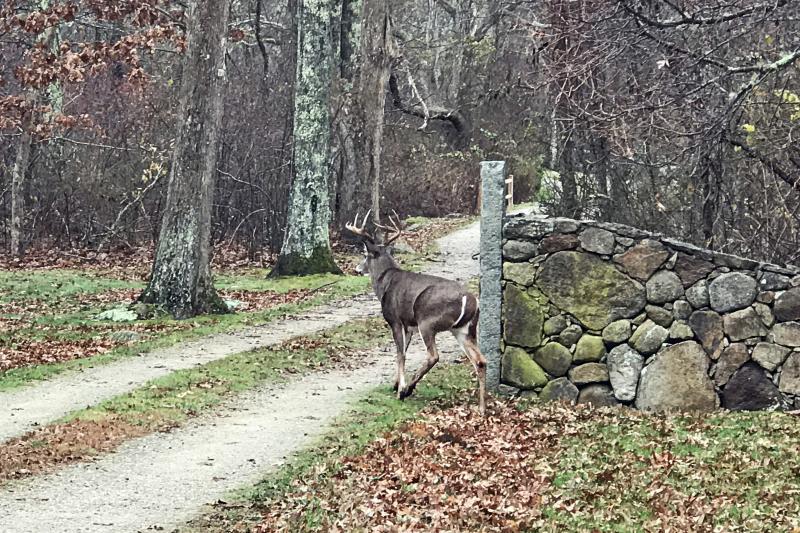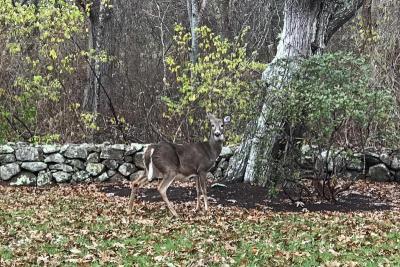Oh, Deer! Assessing the Complicated Relationship between Humans and Deer by Adeline Bellesheim, Lloyd Center for the Environment Educator/Naturalist
Many of us have a love-hate relationship with our resident deer community. They are friendly, they are cute, and everyone has love in their heart for the classic film Bambi. But a large, overgrown population of deer also presents society with quite a few problems. Throughout time, we have found many ways to combat these issues, but this has caused an intense fluctuation in the number of deer in our area. The overwhelming presence of humans on this planet has brought many difficulties to our four-legged friends as well.
Many of us recognize White-tailed deer (Odocoileus virginianus) by their famous, fluffy white tail that is raised in alarm the second they hear a twig snap beneath our feet. These are the most common type of deer residing in the south coast Massachusetts area. We often see these mammals browsing on an herbivorous diet of leaves, grass, fruits and twigs throughout forests and meadows. On average, they weigh between 110 – 300 pounds and live approximately 6-14 years when kept in captivity.
Unlike many of the problem species here in the northeast, White-tailed deer are actually native to this area. It may not seem that way with their overly abundant population size, and their ability to wipe out the understory of a forest, but this is in fact their natural habitat. Human activity has drastically affected the amount, and the type of predators that typically keep deer populations stable. Massachusetts was once the home of a strong population of grey wolves. These wolves were one of the keystone species in forest ecosystems and predated on White-tailed deer. Hunting and industrialization has chased the wolf population far out of this region.
The removal of a top predator from a food web has resulted in a rollercoaster for the deer community. Initially the population skyrocketed, which caused extreme browsing on the understory of our forests. This has led to the formation of what is known as an even-aged forest, or when a majority of the trees in a forest are the same age and will all begin to fall around the same time. Even-aged forests are very vulnerable ecosystems, but luckily, new predators have begun to fill in the role left open by wolves. Coyotes are now major predators for deer, but they are not always the easiest creatures to catch! White-tailed deer can run as fast as 30mph and can jump up to 10 feet high and as far as 30 feet in one single bound.
Human activity has also kept deer populations in check by hunting and the creation of highways and major roads. Many of us have stories of times when they or someone close to them has hit a deer with their vehicle. Our roads create unnatural barriers in deer habitats. Although it may seem intentional, they do not purposely cross the roads into oncoming traffic. Often times, it is instinctual for them to want to get to the other side of a road in order to obtain a resource. Although deer may seem like a bother when they are eating from your garden or when we are swerving to avoid them on the road, they are a necessary part of our ecosystem. And remember, it is that time of year when deer are in a frenzy trying to get ready for winter and avoiding hunters, so please be safe on the road!
















